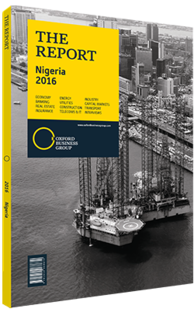Fast-moving consumer goods segment looks to specialised products
As the country grapples with the consequences of recent economic challenges, Nigeria’s fast-moving consumer goods (FMCGs) market has proven fairly resilient in 2015 and 2016, with consumers retreating to low-cost staples as their spending power diminishes. “Expensive alternatives are now less attractive, and lower-priced products are filling the gap,” Joan Ihekwaba, general manager for marketing at UAC Foods, told OBG. Nonetheless, expenditure on food dipped in 2015 to the lowest level since 2012. The total spent was $197.24bn, down from $213.97bn in 2014, according to Euromonitor International.
Localisation
As the world’s seventh-most-populous country, Nigeria’s FMCG segment has been a stalwart for foreign investors. The first to enter was PZ Cussons in the late 19th century. Almost all sales are through the informal market, which accounts for 98% of overall retailing – the informal markets at Onitsha, for example, bring together 50,000 vendors, with a reported annual volume of FMCG trade of $1.5bn, according to a 2015 report from Africon, a Germany-based consultancy focusing on sub-Saharan Africa. That fact, alongside distribution challenges related to poor infrastructure and a wide variety of languages and cultural preferences, have combined to create a localisation trend in the FMCG sector.
This is trend can be seen across Africa, according to global consultancy McKinsey’s autumn 2015 report “Perspectives on Retail and Consumer Goods”. The report stated, “The most successful entrants into Africa are those that have been careful and selective about the markets they enter. Instead of seeking to build a presence across entire countries, they’ve targeted the fastest-growing cities or city clusters – urban centres where per capita income and consumption spending far exceed the national average.”
This can be seen most visibly in the differences between demand and supply in the north and south of the country, which are heavily Muslim and Christian, respectively. In the former, halal foods are sold at all times and Islam’s holy month of Ramadan typically brings a spike in consumption. Supplying the north means longer journeys to market, and therefore a focus on products with lengthier shelf lives. But regional variations in Nigeria run deeper than basic bifurcation. The McKinsey study found that consumers in Lagos associate low prices for food items with low quality, for example, whereas in Abuja there is no such correlation. One example of a company tailoring products to a specific group is SABM iller, which has created a local version of its Hero beer brand for the south-eastern section of the country, which is largely populated by the Igbo ethnic group. Bottles of Oh Mpa, which means “Oh father” in Igbo, have labels displaying a rising sun, a symbol of deep significance in that culture and part of Nigeria.
Distribution
Getting products to consumers means working with distributors, but also street vendors. This includes the street sellers that rely on traffic jams during morning and afternoon commutes to provide a slow-moving and therefore captive market for their products – although a ban on such sales methods in Lagos, the country’s largest commercial city, may force producers to find alternate distribution methods. Yaw Nsarkoh, managing director of Unilever Nigeria, told OBG, “Nigeria’s long-term potential is significant as the country boasts a large, active population that spends money.”
In September 2015 US-based foods producer Kellogg’s announced that it had invested $450m in Nigeria via a three-year contract with the Nigerian arm of Singaporean conglomerate Tolaram Africa. At EY’s Strategic Growth Forum Africa in Johannesburg in November 2015, Gerald Mahinda, managing director of Kellogg’s sub-Saharan Africa division, told attendees that one of the major reasons for their decision to partner with Tolaram was its strong route-to-market system, and thus the ability to get products to users.
You have reached the limit of premium articles you can view for free.
Choose from the options below to purchase print or digital editions of our Reports. You can also purchase a website subscription giving you unlimited access to all of our Reports online for 12 months.
If you have already purchased this Report or have a website subscription, please login to continue.

